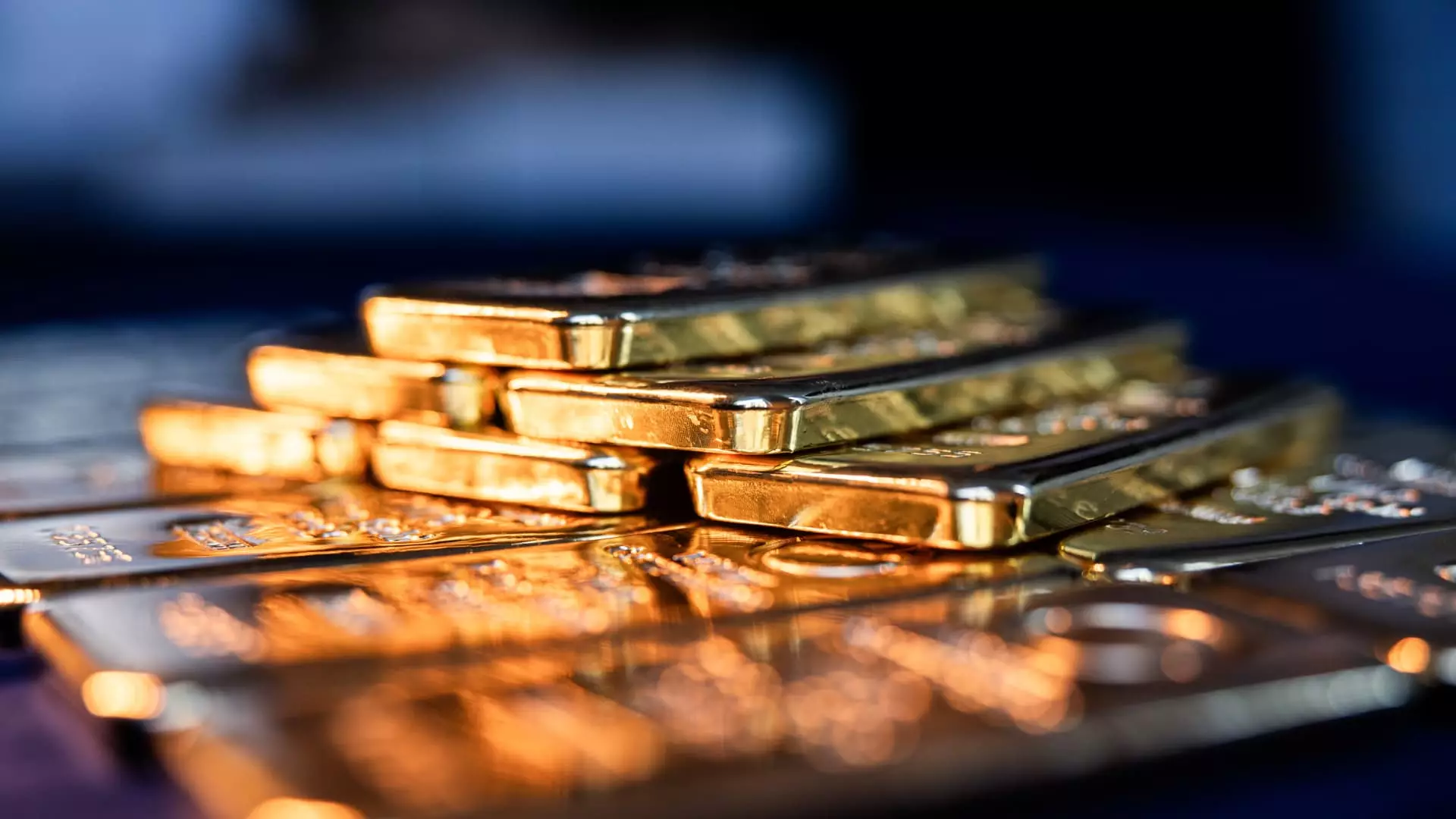Gold has long captivated investors’ imaginations, standing as a testament to resilience in financial markets afflicted by turmoil and uncertainty. In recent months, the price of gold has surged, reaching dizzying heights, driven largely by fears of a global economic downturn. The sentiment is palpable: when the geopolitical and financial landscapes shift uncomfortably, the instinct is to flock to this precious metal, recognizing it as a time-tested hedge. However, with analysts warning that this gold rush may have reached its zenith, potential investors should exercise caution. The narrative surrounding gold isn’t merely one of financial wisdom; it’s increasingly shaped by emotional reactions to crises and broader market trends that need dissecting.
Record Prices: A Double-Edged Sword
As of late, gold has traded above $3,000, a price point that signals not just optimism but possibly desperation among investors. A 21% increase year-to-date and a staggering 30% rise compared to this time last year suggest an unyielding demand for what is perceived as a safe haven. Yet, such exuberance can often cloud judgement. Sameer Samana, from Wells Fargo, warns that we might be standing on the precipice of what some investors will regret – a classic example of the ‘fear of missing out’ syndrome. The reality is alarming: market dynamics can shift rapidly. What looks like a guaranteed winning horse today could turn into a financial albatross tomorrow.
Furthermore, rising gold prices excursion means some investors might be buying in at a peak. As traditional markets waver, including a notable dip in the S&P 500, the compulsion to seek refuge in gold can be akin to chasing a mirage. It’s an alluring chase, yet history has shown that the gold market does not always reward latecomers.
The Tariff Tango: How Politics Shape Gold Prices
The recent imposition of tariffs on top of tariffs between the U.S. and critical trading partner China has escalated tensions that make gold’s role in a diversified portfolio essential to consider. Yet, the premise that gold should form a significant portion of one’s investment strategy is under scrutiny. Analysts convey a more nuanced understanding: while some may observe a fear-induced uptick in gold’s appeal, a closer look reveals that its performance during actual recessions can be lackluster. In environments where economic conditions worsen, performance indicators suggest that bonds and other financial instruments typically outperform gold.
Still, some investors can’t shake the psychological security offered by physical gold. Buying bars or coins as tangible assets can serve as an insurance policy against existential financial crises. In tumultuous times, knowing you have something concrete to hold just might bring a sense of peace. The growing trend of gold purchases at retail giants like Costco—where sales soared to an estimated $200 million monthly—illustrates this instinctive drive for tangible investment.
Gold ETFs: A Smarter Play?
For most investors seeking to integrate gold into their portfolios, experts lean towards utilizing exchange-traded funds (ETFs) rather than stocking physical gold. Funds like the SPDR Gold Shares (GLD) or the iShares Gold Trust (IAU) are suggested as more practical options. With ETFs, investors can enjoy the benefits of gold while avoiding the headache of storage, security, and maintenance. Furthermore, incorporating gold exposure should be carefully calculated—financial advisors generally recommend limiting this allocation to about 3% of an investment portfolio.
This cautious approach considers not just the allure of gold but the underlying principles of diversification and risk management. The gold boom may feel compelling, but financial prudence dictates a carefully minimalist approach. For centrist liberals engaging with this fluctuating market, balancing enthusiasm for precious metals against fundamental economic realities is essential.
The Psychological Investment: Jewelry and Beyond
Interestingly, consumer beliefs around gold—and its value—extend beyond mere price appreciation. Fine jewelry, particularly from esteemed houses like Cartier and Tiffany, reflects a blend of aesthetic and intrinsic value. High-quality pieces can hold value and offer personal satisfaction—an ongoing investment that transcends market whims. As people have been buying jewelry for millennia, there’s arguably a more profound psychological component: the comforting notion of ownership during uncertain times.
In this context, gold serves not only as an investment tool but as a form of self-affirmation. Investing in quality jewelry empowers individuals to align emotional security with financial strategy. This phenomenon, particularly in the face of market turbulence, further complicates the narrative surrounding gold and its ever-evolving place within our portfolios.
In essence, navigating the gold market requires more than reacting to current events; it demands a fundamental reassessment of value, risk, and emotional triggers. Within comprehensive financial planning, gold’s role can be multifaceted—emphasizing mindful investment rather than reactive accumulation.

Leave a Reply